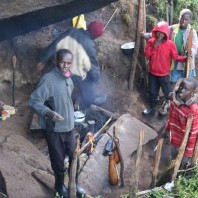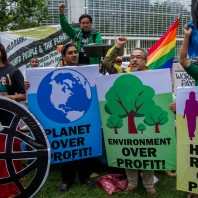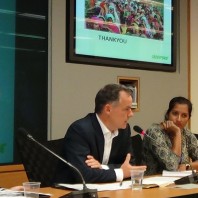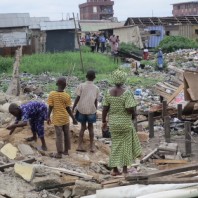Despite promises from World Bank President Jim Kim over two years ago to personally assist in addressing tensions over indigenous land rights in Kenya, approximately 1200 families of the Sengwer indigenous community were told by the Kenya Forest Service (KFS) on Dec. 1 they had just 7 days to leave their ancestral land in the …
While the recent election has cast a shadow of uncertainty over the future role of the United States in multilateral organizations such as the World Bank, it is worth reflecting on the progress that has been made at this institution and across the development finance landscape because of the leadership of the United States. The …
The risks associated with development projects often fall disproportionately on the communities in close proximity to project implementation sites, communities that in some cases are the same groups that projects aim to benefit and serve. These local communities are uniquely placed to see and feel project risks and impacts on a day to day basis, and to …
This World Bank Annual Meetings 2016 Civil Society Policy Forum session addressed how the World Bank Group can ensure that its financial intermediary (FI) investments are consistent with its forest and climate commitments. New research by Inclusive Development International on the impacts of IFC FI investments on forests, land rights, and climate was presented. A …
Photo © Joe Athialy (Washington DC, October 3, 2016) – The World Bank Group has secretly funded a coal boom in Asia despite announcing a moratorium on such projects in 2013, according to the results of a new investigation. World Bank President Jim Yong Kim has spoken forcefully about the dangers of new coal projects. …
Please join BIC for a panel discussion on: Citizen Engagement with the World Bank Wednesday, October 5 I2-220 9:00 -10:30am The success of development finance is largely dependent on citizen engagement, as policy makers and practitioners increasingly recognize. The World Bank plays a key role in advancing this agenda. The Bank has made a variety …
More than twenty years ago, in response to disastrous effects of its development projects, the World Bank Group (WBG) instituted the first of eight safeguard policies designed to “prevent or mitigate adverse impacts of its projects on people and the environment.” These policies formed the bedrock of a rules-based, “do no harm” approach to development …
If key changes are not made to the World Bank’s proposed new safeguards, the updated framework could prevent communities from meaningfully participating in the development process. U.S. law and longstanding World Bank practice have recognized for decades the importance of providing communities with enough time to understand and voice concern about potentially harmful projects. Procedural …
As World Bank member governments gather in Myanmar to discuss their contributions to the International Development Association, the Bank’s fund for the poorest countries, the Bank Information Center is calling on donors to make the adoption of stronger safeguard policies a key objective in the replenishment negotiations. In support of this call, BIC has released …
International development finance is intended to alleviate poverty by sparking inclusive growth. But without strong protections for local communities, it can exclude and disenfranchise instead. World Bank development projects like dams, roads, and power plants can cause devastating harm to people and the planet. Too many have suffered displacement, loss of livelihoods, pollution, destruction of …









